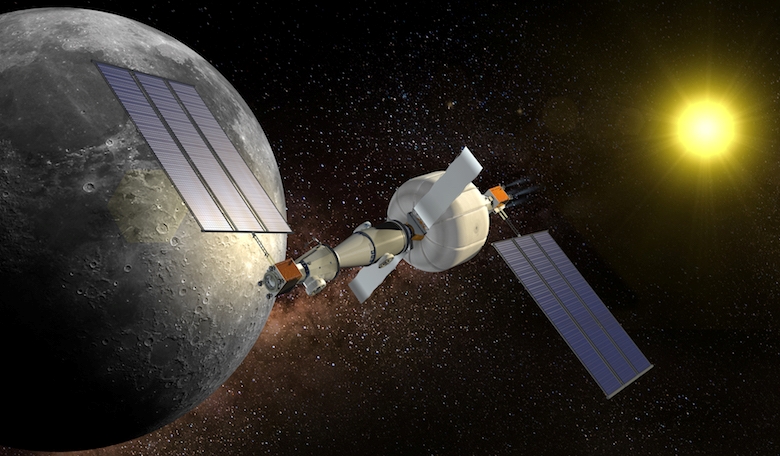Cozy, 300-cubic-meter living quarters accommodate four astronauts for 30 days, with places to exercise, do science experiments and even grow a little fresh food.
Short for large inflatable fabric environment, the LIFE habitat’s interior space is about a third the size of the International Space Station’s, said systems engineer Jeff Valania of Sierra Nevada Corp., who answered questions March 14 on Twitter about the company’s prototype of an inflatable deep-space habitat.
NASA awarded six companies contracts worth a total of $65 million in 2016 to develop habitat concepts and prototypes under public-private funding partnerships in which both the agency and the companies contribute money. A habitat is one of several modules planned to make up NASA’s Lunar Gateway platform, which the agency’s White House-appointed administrator Jim Bridenstine described March 11 as a Moon-orbiting staging area for lunar landers and occasionally astronauts, with solar-electric propulsion moving the entire Gateway around from one orbit to another.
Posting with the hashtag #AskAwayGateway, the Twitter users wanted to know how the soft-sided habitat would protect astronauts from debris strikes (a “micrometeroid shield,” Valania replied) and solar radiation (the material Vectran). Could the module be tested at the ISS first? That comes down to “what testing NASA wants prior to integrating at the Gateway.”
A former U.S. Navy pilot, and a member of Congress until his NASA appointment in 2018, Bridenstine described NASA’s vision for the Gateway during his March 11 speech about the White House’s fiscal year 2020 budget request to Congress.
“I hear people sometimes say, ‘Well, you know, Gateway is not a space station,’ It is not. It is a command and service module. But it will have the opportunity to have crew,” Bridenstine said.
“When we go back to Apollo, we remember that we landed 12 astronauts on the surface of the Moon over a period of three years, 1969 to 1972. Each one of those missions was to the equatorial regions of the Moon. What Gateway represents is not just the opportunity to go to the Moon over and over again in a sustainable architecture, but it represents an opportunity to get to more parts of the Moon than ever before. … What we’re interested in doing is learning all about the entire Moon,” he continued, “giving landers, rovers, robots and humans more access to more parts of the Moon than ever before. We don’t want to miss anything.”
Crew longing to look out from their home away from home, however, onto the mountains and craters below might be disappointed. The LIFE module could be redesigned to include windows but doesn’t under the current plan.
SNC’s Space Systems division is building the habitat prototype at its Louisville, Colorado, factory where the company is also building the Dream Chaser Cargo System, an autonomous lifting-body spaceplane contracted by NASA to launch on a rocket, resupply the ISS with cargo, and glide back to Earth for a runway landing, the vehicle’s first delivery pegged for late 2020.
The company was one of six awarded the habitat contract along with Bigelow Aerospace of Las Vegas, Nevada; Boeing Co. of Pasadena, Texas; Lockheed Martin Corp. of Denver, Colorado; Orbital ATK of Dulles, Virginia; and NanoRacks of Webster, Texas.











